History of African Americans in Philadelphia
This article needs to beupdated.(October 2023) |
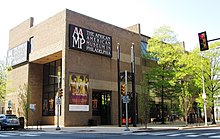 African American Museum in Philadelphia | |
| Total population | |
|---|---|
| 1,256,908[1] | |
| Regions with significant populations | |
| North Philadelphiawest ofGermantown Avenue,Point Breezein South Philadelphia,West Philadelphiaand parts ofSouthwest Philadelphia[2] | |
| Languages | |
| Philadelphia English,African-American Vernacular English,African languages | |
| Religion | |
| Christianity(MainlyHistorically Black Protestant),Islam,Irreligion[3] |
| Part of a series on |
| Ethnicity in Philadelphia |
|---|
|
|
|

| Part ofa serieson |
| African Americans |
|---|

The history ofAfrican Americansor Black Philadelphians in the city ofPhiladelphia,Pennsylvania has been documented in various sources. People of African descent are currently the largestethnic groupin Philadelphia. Estimates in 2010 by theU.S. Census Bureaudocumented the total number of people living in Philadelphia who identified as Black or African American at 644,287, or 42.2% of the city's total population.[4]
Originally arriving in the 17th century asenslaved Africans,the population of African Americans in Philadelphia grew during the 18th and 19th centuries to include numerousfree Blackresidents who were active in theabolitionist movementand as conductors in theUnderground Railroad.During the 20th and 21st centuries, Black Philadelphians actively campaigned against discrimination and continued to contribute to Philadelphia's cultural, economic and political life as workers, activists, artists, musicians, and politicians.
Between the 1920s and 1940s, North, West, and South Philadelphia saw an increase of the Black population whenwhite flightoccurred in Philadelphia.[5]More than 50,000 African immigrants live in the Philadelphia metro area. Most of them are fromEthiopia,Nigeria,Ghana,andLiberia.[6]
History[edit]
1639 to 1800[edit]
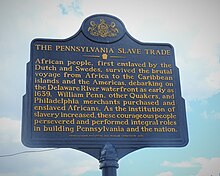
Enslaved Africans arrived in the area that becamePhiladelphiaas early as 1639, brought by European settlers. When theslave tradeincreased due to a shortage of European workers during the 1750s and 1760s, approximately one to five hundred Africans were sent to Philadelphia each year. In 1765, there were roughly fifteen hundred Black Philadelphians; of these, one hundred were free. By the time theAmerican Revolutionbroke out in 1775, enslaved individuals were one-twelfth of the roughly sixteen thousand people who lived in Philadelphia.[7]

Black people served on both the Loyalist and Patriot sides during theAmerican Revolution.Two of the individuals supporting the Patriot side wereCyrus Bustill,who worked as a ship's baker during the Revolution and later became a prominent Philadelphia businessman and activist, andJames Forten,who served on aprivateerat the age of fourteen and became a wealthy sailmaker and abolitionist.
ThePennsylvania Abolition Societywas founded by whiteQuakersin 1775 and eventually became a biracial organization.[8][9]In 1780, apolicy of gradual emancipationwas instituted in Pennsylvania. During this period, enslaved people were freed throughmanumission;others managed to escape or buy their own freedom. By 1783, the free Black community in Philadelphia surpassed one thousand residents, while four hundred residents remained enslaved.
Richard AllenandAbsolom Jonesfounded theFree African Societyin 1787, a mutual aid society, and Allen, with his wifeSarah Allen,established theBethel African Methodist Churchin 1794.[10]During the1793 Philadelphia Yellow Fever Epidemic,Black residents were mistakenly believed to be immune to the disease, so they worked as carriers of the dead and tended to the sick and dying inside their homes.[11]Kidnapping of free Black residentsto be sold back into slavery was a risk that continued into the 19th century, especially for children.[12]
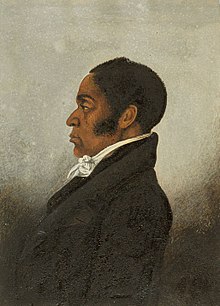
The Quakers established a Burying Place For All Free Negroes or People of Color in Byberry Township. This African Burial Ground remains an obscure anomaly, largely forgotten today although it was placed on the Philadelphia Register of Historic Places.[13]
Most of the Black population in Philadelphia were living as freemen and women by 1811, although some remained enslaved until the 1840s. The free community was joined by runaways from the South and refugees from theHaitian Revolution.
1800 to Civil War[edit]
The growing free Black community was instrumental in making Philadelphia a hotbed ofabolitionismby the 1830s. Wealthy Black entrepreneurJames Fortengave white abolitionistWilliam Lloyd Garrisonfunding so he could start the anti-slavery newspaperThe Liberatorand contributed articles to it.[7]Black activists were founders and members of the national biracial group theAmerican Anti-Slavery Society,created in Philadelphia in 1833, and thePennsylvania Anti-Slavery Society,created in 1838. In December 1833, after women were excluded from the American Anti-Slavery Society, a group of black and white women, which included Cyril Bustil's daughterGrace Douglass,and James Forten's daughters, Sarah,HarrietandMargarettalaunched thePhiladelphia Female Anti-Slavery Society(PFASS).[14]
While some African Americans in Philadelphia worked in professional jobs that catered to the Black community like teachers, doctors, ministers, barbers, caterers, and entrepreneurs, most Black Philadelphians at that time worked at physically demanding and low-paying jobs. They competed with working class whites, especially new Irish immigrants, for jobs, which led to racial conflict. In 1834,a race riot brokestarted at a local tavern that was popular with both black and white Philadelphians. A white mob attacked Black homes, businesses, and churches. In 1838, another white mob attackedPennsylvania Hall,where black and white abolitionists were meeting, and burned it down. Also in 1838, Pennsylvania's newly ratified constitution officially disfranchised African Americans.[7]In 1842, white mobs again attacked blacks during theLombard Street Riots.
Despite the risks and racism they encountered, African-Americans continued to come to Philadelphia, since it was the closest major city to the Southern States, where slavery was still legal. In the years leading up to the Civil War, Philadelphia had the largest black population outside the slave states. There were 15,000 black Philadelphians in 1830, 20,000 by 1850, and 22,000 by 1860. Most lived in South Philadelphia near what is today Center City, but there were smaller populations in Northern Liberties, Kensington, and Spring Garden. They came because of Philadelphia's reputation as a thriving political, cultural, and economic center for African Americans.[15]
The city was also a major stop on the Underground Railroad, especially for slaves escaping through Maryland and Delaware.[7]Robert Purvis,president of the biracialPennsylvania Anti-Slavery Societyfrom 1845–1850, was also chairman of the GeneralVigilance Committeefrom 1852–1857, which gave direct aid to fugitive slaves. With his wifeHarriet Forten Purvis,he worked as a conductor of theUnderground Railroad.Purvis estimated that from 1831–1861, they helped one slave per day achieve freedom, assisting more than 9,000 slaves to escape to theNorth.They used their own house, then located outside the city, in Byberry Township, as a place where fugitives could hide.[16]Purvis built Byberry Hall across the street from his home, on the edge of the Quaker-owned Byberry Friends Meeting campus, to host anti-slavery speakers. It still stands today.[17]
Civil War to 1900[edit]
During theCivil War,eleven African American Philadelphia regiments fought for the North, after the passage of the 1862Second Militia Actallowing blacks to be enlist in the Army.[18]
After the Civil War, African Americans in Philadelphia, includingOctavius V. Catto(1839–1871), organized to end segregation of the city’s schools and streetcars and regain the right to vote. Their efforts paid off; in 1867, streetcar segregation was ended throughout the state, and legal segregation of schools ended in 1881 (although de facto segregation continued into the 20th century). TheFifteenth Amendmentto the U.S. Constitution gave Pennsylvania Black Americans the right to vote in 1870. But Catto himself was shot and killed while trying to cast his ballot in 1871.[19]
In 1879, painterHenry Ossawa Tannerenrolled as the first African American student at thePennsylvania Academy of Fine Arts.After travels abroad, he would return to Philadelphia in 1893 to paint his most famous work,The Banjo Lesson.[20]Also in 1893, Philadelphia high school studentMeta Vaux Warrick Fullercreated an art project that was included in The World's Columbian Exposition in Chicago and led to her future success as a multi-disciplinary artist.[21]
The Black population rose to nearly 32,000 in 1880. In 1884, there were approximately 300 black-owned businesses, including the Philadelphia Tribune (started in 1884) and Douglas Hospital (opened in 1895). By 1900, the Black population at 63,000 people, had nearly doubled.[22]

In 1896, Philadelphia poet, suffragist, and abolitionistFrances Harperhelped found theNational Association of Colored Womenand served as its vice president.[23]By then, she had already had a long career as a published writer, including works like her poemBury Me In a Free Land,Sketches of Southern Life,and the novelIola Leroy.
Published in 1899 by theUniversity of Pennsylvaniaand conducted byW. E. B. Du Bois,The Philadelphia Negro: A Social Studywas the first sociological race study of the African American community in the United States.[24]The aim of the social study was to identify "The Negro Problems of Philadelphia," the problems facing black communities not only in Philadelphia, but all over the country as well.[25]The study focused on Philadelphia's Seventh Ward (currently Center City Philadelphia) and the socioeconomic conditions of black churches, businesses and homes within the neighborhood. UsingstatisticsDu Bois created from his survey data, Du Bois compared the occupation, income, education, family size, health, drug use, criminal activity, and suffrage of black and white residents living in the Seventh Ward and to Philadelphia's other wards.[26]Du Bois used statistical evidence to highlight the socioeconomic inequalities the black community faced and make the black community's suffrage known to whites. In turn, he disproved stereotypes surrounding the black community which were cited as the sources of "The Negro Problem."[26]
1900 to 1950s[edit]
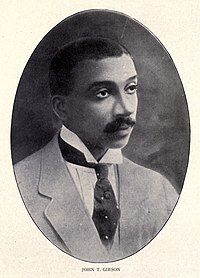
World War I brought an influx of black migrants from the rural South, who moved to Philadelphia lured by wartime jobs there duringThe great migration.As a result, the black population of Philadelphia doubled again from 63,000 in 1900 to 134,000 in 1920.Most of the new residents came from rural backgrounds and were working poor.[27]
Efforts to build new structures to house the workers were insufficient, so African Americans in search of housing moved into existing houses in white neighborhoods, where they encountered hostility and racism. In July 1918, after two black families on Pine Street were attacked by white neighbors who burned household furnishings, G. Grant Williams, editor of thePhiladelphia Tribune,wrote of the "Pine Street war Zone": "We stand for peace," he said, and advised Black residents to "stand your ground like men," adding “You are not down in Dixie now and you need not fear the ragged rum crazed hellion crew... They may burn your property, but you burn their hides with any weapon that comes handy while they engage in this illegal pastime."[28]
Three weeks later,racial violence erupted againwhich lasted for several days. During the riot, black homes were destroyed by white mobs, three people were killed, one man was nearly lynched, and a white police officer beat up a black man while he was in the hospital. As a result, African Americans in Philadelphia formed the Colored Protective Association, led byReverend RR WrightJr., to "have a permanent organization of protection" to fight discrimination in schools, housing, employment and elsewhere, and to investigate cases of police brutality and police collusion with the white rioters. Their efforts eventually led to the removal of the entire police force by the Director of Public Safety.[29]

In 1925, the artist and printmakerDox Thrashmoved to Philadelphia, where he would spend most of his career.[30]Black Opals,an African American literary magazine associated with theHarlem Renaissancewas published in Philadelphia between spring 1927 and July 1928,.[31]Co-edited byArthur Huff FausetandNellie Rathbone Bright,the magazine's contributors includedMae Virginia Cowdery,Jessie Redmon Fauset,Marita Bonner,andGwendolyn B. Bennett.Allan Randall Freelonwas the magazine's artistic director.[32]Also in the 1920s,John T Gibsonbecame the wealthiest Black entrepreneur in Philadelphia because of his ownership of the popularStandardandDunbartheaters and his management of diverse musical andvaudevilleacts.[33]
TheGreat Depressionhit Black Philadelphians hard. By 1933, 50% of all Black residents were unemployed.[34]And yet by 1935, African Americans owned 9,855 homes and 787 stores; they were also working in more professional occupations, like physicians ( 200); clergymen ( 250); schoolteachers (553) and policemen ( 219). Their neighborhoods were also becoming more concentrated and more segregated from white neighborhoods.[35]
In 1938,Crystal Bird Fausetbecame the first female African American elected as state legislator.
ThoughWorld War IIbrought wartime jobs to African Americans, they still faced substandard housing and were not allowed to work on Philadelphia public transit as motormen or conductors until the Federal Government stepped in to pressure thePhiladelphia Transportation Companyto open up these jobs to them in 1944. From August 1–6, white transit workers responded by staginga massive sickout strike.After pressure from theNAACP,the Federal Government sent in 5,000 troops to break the strike and keep public transportation running.[36]
Philadelphia was a center for the mid twentieth century Golden Age ofGospel music,attracting performers like the nationally renowned male quartets theDixie Hummingbirdsand theSensational Nightingales,as well asMarion Williamsbefore she started her solo career.[37]
1950s to present[edit]

The fight against discrimination and segregation in education and employment continued through the 1950s and 60s, with legal battles and protests occurring throughout those years.Cecil B. Moore,president of the local NAACP, was a leading activist during that time, and ReverendLeon Sullivanwas instrumental in building Black community and economic power.Marie Hickssuccessfully organized demonstrations and brought a lawsuit againstGirard Collegetodesegregatethat institution.[38]In 1964, a clash between police officers and residents sparkeda three day riot.[39]
The 1960s saw a rise in theBlack Powermovement in Philadelphia. Freedom Library on Ridge Avenue in North Philadelphia, started in 1964 by John Churchville, was where Churchville and other activists gathered to form the Black Power Unity Movement in 1965. Another important center of Black Power was TheChurch of the Advocatein North Central Philadelphia, whose congregation had become increasingly African American. FatherPaul Washingtonorganized the first Black Power rally in 1966; soon there were rallies all over the city, and the third national conference in Philadelphia attracted 2,000 people. The newspaperVoice of Umujacame out of the conference.[40]
Reggie Schellbecame the leader of the Philadelphia chapter of theBlack Panther Partyin 1969. Under his leadership, the party held rallies and created food distribution and education programs throughout the city. Black Power spilled onto college and high school campuses, where students demonstrated for more Black faculty and Black studies classes. In 1970, Philadelphia police raids of three offices of Black Power activists at gunpoint, in which they publicly strip searched activists, made international news for their brutality and united the black community in outrage. Later that year, the Panther sponsored Revolutionary People's Constitutional Convention was held at Temple College and attracted 14,000 people.[40]

Philadelphia soulwas a genre of music that arose in the late 1960s and 1970s. Influenced by funk, it was characterized by lush instrumental arrangements with sweeping strings and piercing horns. Fred Wesley described it as "putting the bow tie on funk". It moved funk more towards the disco sound that would become popular in the late 1970s and influenced later Philadelphia-born music makers like singerJill Scott.[41][42]
Predominently Black groupMOVEwas founded in 1972 byJohn Africa.The organization lived in acommunalsetting inWest Philadelphia,following philosophies ofanarcho-primitivism.[43]In 1978, a standoff between MOVE and the Philadelphia police resulted in the death of one police officer and injuries to sixteen officers and firefighters. Nine members were convicted of killing the officer and receivedlife sentences.In 1985, another conflict resulted in a police helicopter dropping a bomb onto the roof of the MOVE compound, atownhousethat was located at 6221 Osage Avenue.[44][45]The ensuing fire killed six MOVE members, and five of their children, and destroyed sixty-five houses in the neighborhood. The police bombing was strongly condemned. The MOVE survivors later filed acivil suitagainst the City of Philadelphia and the PPD and were awarded $1.5 million in a 1996 settlement.[46]Other residents displaced by the destruction of the bombing filed a civil suit against the city and in 2005 were awarded $12.72 million in damages in a jury trial.[47]
In 1982,Mumia Abu-Jamal,a Philadelphia activist and journalist, was convicted and sentenced to death for the 1981 murder in Philadelphia of police officer Daniel Faulkner. He became widely known while on death row for his writings and commentary on the U.S. criminal justice system. After numerous appeals, his death penalty sentence was overturned by a Federal court, with the prosecution agreeing in 2011 to a sentence of life imprisonment without parole.[48]
Many Philadelphia activists of the mid to late 20th century went on to achieve political power. In 1975, Cecile B. Moore won a seat on the City Council.C. Delores Tucker(1927-2005) became the first black Pennsylvanian appointed to the office of the secretary of state.David P. Richardson(1948-1995) was elected to the Pennsylvania House of Representatives in 1972. In 1984,W. Wilson Goode(b. 1938) became Philadelphia’s first black mayor. Goode’s administration was followed by black mayors John Street (b. 1943) andMichael Nutter(b. 1957).[49]
Many black Philadelphia natives have moved to the suburbs or to Southern cities such as Atlanta, Dallas, Houston, Birmingham, Memphis, San Antonio and Jackson.[50][51]
Despite the persistence of problems like unemployment and high public school dropout rates, the black community in Philadelphia in the early 21st century continued to attract new residents and contribute its talents and energy to the city. In 2010, its total population stood at 657,343 people or 43.4 percent of Philadelphia's entire population.[22]
Institutions[edit]
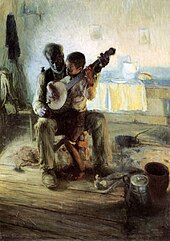
TheAfrican American Museum in Philadelphiais located inCenter City.
TheAces Museumhonors WWII veterans and their families.
TheColored Girls Museum,founded by Vashti DuBois, is dedicated to the history of Black women and girls.[52]
TheNational Marian Anderson Museumcelebrates the life of the notable opera singerMarian Anderson.
ThePaul RobesonHouse hosts tours of Robeson's former residence.[53]
Geography[edit]
20th century[edit]
Circa 1961Society Hillwas a majority black and low income neighborhood, but by 1976 it became gentrified and mostly white with the remaining black population residing in about three or four high-rise apartment buildings with high rents.Black Enterprisewrote that a possible reason why wealthier blacks opted not to move to Society Hill was "Unpleasant memories of the old neighborhood".[54]By then many blacks were moving toWynnefield,with many originating fromCobbs CreekandOverbrook;the new residents of Wynnefield had recently become middle class.[54]Also Circa 1976 many African-Americans resided inPowelton Village.The majority originated from other states and held professional positions, including artists, graduate students, musicians, teachers, and writers.[54]
21st century[edit]
From 1990 to 2010, Black residents moved in significant numbers away from the core areas of North and West Philadelphia to Southwest Philadelphia,Overbrook,the Lower Northeast, and elsewhere. The number of Black residents in zip code 19120—which includes the neighborhoods ofOlneyandFeltonvilleand abutsMontgomery County-rose from 9,786 in 1990 to 33,209 in 2010, an increase of 239 percent.[55]
Religion[edit]

TheAfrican Episcopal Church of St. Thomas,established in 1792, was the first house of worship created by and for Black people in the United States. While theSt. George's United Methodist Churchhad initially allowed Black worshipers in the main area, its Black worshipers left after the church moved them to the gallery area by 1787.[56]
Education[edit]
The first school for Black males was established by the Pennsylvania Abolition Society in 1794. In 1813, the Society constructed the school building Clarkson Hall on Cherry Street, and in 1854, created Lombard Street Infant School as an aid to working parents.[57]
In 1976, 66% of all students of theSchool District of Philadelphiawere black; this number was proportionally high since whites of all economic backgrounds had a tendency to use private schools. Wealthier blacks chose not to use private schools because their neighborhoods were assigned to higher quality public schools.[54]
Crime[edit]
Black people in Philadelphia are more likely to be charged with felonies than nonblacks.[58]The homicide victim rate for Black people in Philadelphia is also higher.[59]
Notable residents[edit]

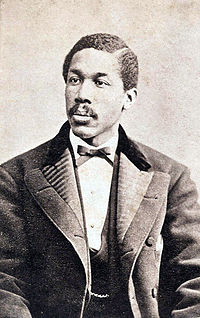
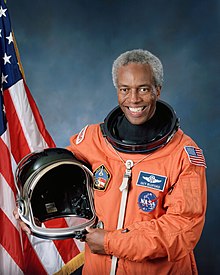


18th–19th centuries[edit]
- Richard Allen,religious leader, author, journalist[60]
- Sarah Allen,abolitionist, underground railroad conductor, missionary[61]
- Cyrus Bustill,18th century entrepreneur, abolitionist and community leader[62]
- Jabez Pitt Campbell,abolitionist, and the 8th Bishop of theMethodist Episcopal Church[63]
- Amy Matilda Cassey,activist, and abolitionist[64]
- Joseph Cassey,businessman, abolitionist, and activist[65]
- Octavius Catto,educator and Civil Rights activist[66]
- Rebecca Cole,doctor and social reformer[67]
- Rebecca Cox Jackson,founder of a Shaker community in Philadelphia[68]
- Nathaniel W. Depee,activist, and abolitionist[69]
- Frederick Douglass,social reformer, writer, and abolitionist
- Charlotte Vandine Forten,abolitionist[70]
- James Forten,early 19th century businessman and abolitionist[71]
- Margaretta Forten,suffragist and abolitionist[72]
- Grace Douglass,abolitionist[73]
- Sarah Mapps Douglass,19th century educator[74][75]
- Richard Theodore Greener,professor, lawyer, scholar[76]
- Charlotte Forten Grimké,19th century civil rights activist, woman's rights activist[77]
- Frances Ellen Watkins Harper,abolitionist, suffragette, poet, author[78]
- Jarena Lee,preacher[79]
- Absalom Jones,minister, abolitionist, and founder of Free African Society[80]
- John McKee,philanthropist, property owner[81]
- Zedekiah Johnson Purnell,activist, and businessman[82]
- Harriet Forten Purvis,abolitionist[82]
- Robert Purvis,abolitionist, lived most of his life in Philadelphia[83]
- Sarah Louisa Forten Purvis,abolitionist, suffragist[84]
- William B. Purvis,inventor and businessman[85]
- Stephen Smith,businessman, philanthropist, preacher, real estate developer, and abolitionist[65]
- William Whipper,businessman and abolitionist[86]
- Peter Williams Jr.,pastor and abolitionist[87]
20th–21st centuries[edit]
This sectionneeds additional citations forverification.(January 2022) |
- Julian Abele,architect
- Meta Vaux Warrick Fuller,artist
- Henry Ossawa Tanner,painter
- Bessie Smith,blues singer and actress
- Alain LeRoy Locke,Harlem Renaissance philosopher, journalist, author, scholar
- Raymond Pace Alexander,Lawyer and civil rights activist
- Rex Stewart,cornetist/trumpeter, journalist, disk jockey, publisher
- Billie Holiday,singer
- Ethel Waters,Singer, comedienne and actress
- Marian Anderson,contralto opera singer
- Crystal Bird Fausett,first African-American female state legislator (elected 1938)
- Kobe Bryant,basketball player
- Michael Nutter,Mayor of Philadelphia
- John F. Street,Mayor of Philadelphia
- Luckey Roberts,pianist and composer
- Teddy Pendergrass,Singer, songwriter and drummer
- Ed Bradley,News correspondent
- Wilt Chamberlain,basketball player
- Will Smith,rapper, actor
- Guion S. Bluford,astronaut, scientist, pilot
- Kevin Hart,actor, comedian
- Patti LaBelle,singer, actor
- Judith Jamison,ballet dancer, choreographer
- Jill Scott,singer
- Sherman Hemsley,actor
- Solomon Burke,singer
- W. Wilson Goode,Mayor of Philadelphia
- Mumia Abu-Jamal(born Wesley Cook)
- Bill Cosby,Comedian and actor
- Raymond Pace Alexander,lawyer, judge and politician
- Lil Uzi Vert,rapper[88]
- Eve,rapper, singer, actress, and television presenter
- Meek Mill,rapper
- Beanie Sigel,rapper
- Erykah Badu,singer-songwriter
- Questlove,musician
- Jazmine Sullivan,singer
- Freeway,rapper
- Grover Washington, Jr.,Saxophonist, Musician, Writer, Producer, Arranger, Educator
See also[edit]
- Arch Street Friends Meeting House
- Vigilant Association of Philadelphia
- Demographics of Philadelphia
- Puerto Ricans in Philadelphia
- History of the Jews in Philadelphia
- History of Irish Americans in Philadelphia
- History of Italian Americans in Philadelphia
- African Americans in New York City
- African Americans in New Jersey
- History of Pennsylvania
- History of Philadelphia
References[edit]
- "Blacks in Philadelphia." (November 1976).Black Enterprise.Start p. 36.
Notes[edit]
- ^"Philadelphia".12 December 2023.
- ^"16 Things to Know: African-American Philadelphia".8 July 2016.
- ^"Religious Landscape Study".
- ^"A City Transformed"(PDF).Philadelphia Research Initiative, 2011.RetrievedMarch 7,2021.
- ^"Black Homeownership Before World War II".29 March 2023.
- ^"African | Global Philadelphia".9 August 2023.
- ^abcdWolfinger, James."African American Migration".Encyclopedia of Greater Philadelphia.RetrievedMarch 5,2021./
- ^"Founding of Pennsylvania Abolition Society". Africans in America. PBS.
- ^Diemer, Andrew."Free Black Communities".Encyclopedia of Greater Philadelphia.RetrievedMarch 5,2021.
- ^Diemer, AndrewFree Black Communities,Encyclopedia of Greater Philadelphia /
- ^"Africans in America/Part 3/The Yellow Fever Epidemic".www.pbs.org.
- ^"Kidnapping in Pennsylvania".PBS.RetrievedMarch 7,2021.
- ^Menkevich, Joseph, J."Burying Place For All Free Negroes or People of Color within Byberry Township"(PDF).Philadelphia Historical Commission, Nomination.Archived fromthe original(PDF)on 2015-09-20.RetrievedMarch 17,2021.
{{cite web}}:CS1 maint: multiple names: authors list (link) - ^ Ira V. Brown,Cradle of Feminism: The Philadelphia Female Anti-Slavery Society, 1833-1840 The Pennsylvania Magazine of History and Biography Vol. 102, No. 2 (Apr., 1978), pp. 143-166 University of Pennsylvania Press
- ^"Encyclopedia of Greater Philadelphia | African American Migration".
- ^"ROBERT PURVIS DEAD.; Anti-Slavery Leader Expires in Philadelphia, Aged 87 -- His Work for the Black Race"(PDF).The New York Times. April 16, 1898. Retrieved April 26, 2014
- ^Bacon (2007), But One Race, p. 106
- ^Lucien Holmess,United States Colored Troops , Encyclopedia of Greater Philadelphia, retrieved March 5, 2021
- ^Lamb, Chris (2020-10-08)."Octavius Catto fought for black voting rights and was killed for it".The Washington Post.Retrieved2021-03-06.
- ^Finkelman, Paul, ed. (2006). Encyclopedia of African American History 1619-1895. 3. New York: Oxford University Press. p. 224.
- ^Meta Vaux Warrick Fuller ". American National Biography Online. Retrieved March 11, 2017.
- ^abWolfinger, James."African American Migration".Encyclopedia of Greater Philadelphia, 2013. Retrieved March 5, 2021.
- ^Bacon, Margaret Hope (1989). "One Great Bundle of Humanity": Frances Ellen Watkins Harper (1825-1911) ". The Pennsylvania Magazine of History and Biography. 113 (1): 21–43. ISSN 0031-4587. JSTOR 20092281.
- ^Gerald, Horne (2009-11-12).W.E.B. Du Bois: a biography.Santa Barbara.ISBN978-0313349805.OCLC496518307.
{{cite book}}:CS1 maint: location missing publisher (link) - ^"Philadelphia Negro - Chapter 2 - W.E.B. DuBois".media.pfeiffer.edu.Retrieved2018-04-24.
- ^ab"W.E.B. DuBois - The Philadelphia Negro - Chapter 1".media.pfeiffer.edu.Retrieved2018-04-24.
- ^Wolfinger, James."African American Migration".Encyclopedia of Greater Philadelphia.RetrievedMarch 5,2021.
- ^Franklin, Vincent (July 1975). "The Philadelphia Race Riot of 1918".The Pennsylvania Magazine of History and Biography.99(3): 336–350.
- ^Franklin, Vincent, The Philadelphia Race Riot of 1918, The Pennsylvania Magazine of History and Biography July, 1975, volume 99,issue 3,page 36-350
- ^Ittmann, John W. (2001).Dox Thrash: an African American master printmaker rediscovered.Philadelphia Museum of Art., Terra Museum of American Art. Philadelphia, PA: Philadelphia Museum of Art.ISBN0295981598.OCLC47785679.
- ^Kathleen Collins (2004)."Black Opals".In Cary D. Wintz; Paul Finkelman (eds.).Encyclopedia of the Harlem Renaissance: A-J.Taylor & Francis. p. 133.ISBN978-1-57958-457-3.
- ^Aberjhani; Sandra L. West, eds. (2003). "Philadelphia and the Harlem Renaissance".Encyclopedia of the Harlem Renaissance.Infobase Publishing. pp. 262–3.ISBN978-1-4381-3017-0.
- ^Henry Louis Gates, Jr.; Evelyn Brooks Higginbotham (2009). Harlem Renaissance Lives from the African American National Biography. Oxford University Press. p. 218–9.ISBN9780195387957.
- ^"Encyclopedia of Greater Philadelphia | Great Depression".philadelphiaencyclopedia.org.
- ^"Roots of Hypersegregation in Philadelphia, 1920-1930 – PhillyHistory Blog".Blog.phillyhistory.org. 2016-02-22.Retrieved2021-03-06.
- ^"Encyclopedia of Greater Philadelphia | World War II".philadelphiaencyclopedia.org.
- ^"Encyclopedia of Greater Philadelphia | Gospel Music (African American)".Encyclopedia of Greater Philadelphia.
- ^Sims, Gayle Ronan (April 21, 2007). "Marie Hicks, 83, the Rosa Parks of Girard College", The Philadelphia Inquirer.
- ^"Timeline · Civil Rights in a Northern City: Philadelphia · Digital Exhibitions".Northerncity.library.temple.edu.Retrieved2021-03-06.
- ^abGenovese, Holly."Black Power".Encyclopedia of Greater Philadelphia.RetrievedMarch 6,2021.
- ^Zollo, Paul (1997-08-21). Songwriters On Songwriting. Da Capo Press. p. 118.ISBN978-0-306-80777-0.
- ^"Philly Soul Music Genre Overview - AllMusic". AllMusic. Retrieved 19 June 2018.
- ^"MOVE | Encyclopedia of Greater Philadelphia".philadelphiaencyclopedia.org.Retrieved2018-03-19.
- ^"Let The Fire Burn | Kanopy".freelibrary.kanopy.com.Retrieved2020-06-08.
- ^"I'm From Philly. 30 Years Later, I'm Still Trying To Make Sense Of The MOVE Bombing".NPR.org.Retrieved2019-12-21.
- ^Terry, Don (June 25, 1996)."Philadelphia Held Liable for Firebomb Fatal to 11".New York Times.
- ^"Philadelphia Residents Win Lawsuit Over MOVE Bombing".Pittsburgh Post-Gazette.April 14, 2005.RetrievedMay 25,2024.
- ^Gay, Kathlyn (September 2, 2018). American Dissidents: An Encyclopedia of Activists, Subversives, and Prisoners of Conscience. ABC-CLIO.ISBN9781598847642–
- ^"Encyclopedia of Greater Philadelphia | Civil Rights (African American)".philadelphiaencyclopedia.org.
- ^"Philadelphia Black Population".blackdemographics.com.
- ^"Latinos, Blacks Show Strong Growth in San Antonio as White Population Declines".August 13, 2021.
- ^Wellington, Elizabeth (March 18, 2021)."This exhibit from The Colored Girls Museum is reframing the conversation on Black girlhood".Philadelphia Inquirer.Retrieved1 June2022.
- ^"Paul Robeson House & Museum".Paulrobesonhouse.org.Retrieved2022-08-12.
- ^abcd"Blacks in Philadelphia." p. 44.
- ^"A City Transformed"(PDF). Philadelphia Research Initiative, 2011. Retrieved March 7, 2021.
- ^"Blacks in Philadelphia." p. 36.
- ^"Pennsylvania Abolition Society papers, 1751-1992, undated; bulk 1780-1930".
- ^"Black Philadelphians are overrepresented at every stage of the criminal justice system, DA says".
- ^"Philly homicides rose again in 2019; Blacks made up majority of the victims, data shows".
- ^Bowden, Henry Warner (1993).Dictionary of American Religious Biography.Greenwood Publishing Group. pp. 15–16.ISBN978-0-313-27825-9.
- ^Sanders, Nancy I. (2010-01-01).America's Black Founders: Revolutionary Heroes & Early Leaders with 21 Activities.Chicago Review Press. p. 120.ISBN978-1-61374-121-4.
- ^The Elite of Our People: Joseph Willson's Sketches of Black Upper-Class Life in Antebellum Philadelphia.Penn State Press. p. 62.ISBN978-0-271-04302-9.
- ^"Jabez Campbell, Minister, and Abolitionist born".African American Registry (AAREG).Retrieved2023-01-21.
- ^Peterson, Carla L.; Peterson, Professor of English and Comparative Literature Carla L. (2011-02-22).Black Gotham: A Family History of African Americans in Nineteenth-Century New York City.Yale University Press. pp. 1847–1848.ISBN9780300164091.
- ^abArkles, Janine Black (2015)."Philadelphia Periwigs, Perfumes, and Purpose: Black Barber and Social Activist Joseph Cassey, 1789–1848".Pennsylvania History: A Journal of Mid-Atlantic Studies.82(2).
- ^Silcox, H. (1977).Nineteenth Century Philadelphia Black Militant: Octavius V. Catto (1839–1871).Vol. 44. pp. 53–76.
{{cite book}}:|work=ignored (help) - ^"Dr. Rebecca J. Cole".Changing the Face of Medicine,National Institutes of Health(NIH),U.S. National Library of Medicine.October 14, 2003.
- ^"Rebecca Cox Jackson, Shaker Eldress born".African American Registry (AAREG).Retrieved2023-01-21.
- ^de Vera, Samantha (ed.)."Nathaniel W. Depee".The Fight for Black Mobility: Traveling to Mid-Century Conventions, Colored Conv.Retrieved2023-01-20.
- ^Brown, Stacy M. (21 August 2019)."Women's Suffrage Heroine: Charlotte Vandine Forten".The Washington Informer.
- ^Winch, Julie,A Gentleman of Color: The Life of James Forten,New York: Oxford University Press, 2002, p. 16.
- ^Alexander, Leslie.Encyclopedia of African American History, Volume 1ABC-CLIO (2010), p. 1045.
- ^Yee, Shirley J. (1992).Black Women Abolitionists: A Study in Activism 1828–1860.Tennessee: University of Tennessee Press.ISBN0870497367.RetrievedMay 16,2016.
- ^Bacon, Margaret Hope (Spring 2001). "New Light on Sarah Mapps Douglass and Her Reconciliation with Friends".Quaker History.90(1): 28–49.doi:10.1353/qkh.2001.0011.S2CID162189564.
- ^Levy, Valerie D. (January 8, 2005)."Voices from the Gaps: Sarah Mapps Douglass".University of Minnesota.
- ^Schafer, Susan A. (2013-10-15)."Black Scholar's Post-Civil War Diploma Survives".Associated Press.
- ^"PBS Online: Only A Teacher: Schoolhouse Pioneers, Charlotte Forten".PBS, KQED.Archivedfrom the original on 2001-03-05.
- ^"Frances E.W. Harper, American author and social reformer".Britannica.Retrieved2023-01-21.
- ^Bacon, Margaret Hope (1989).""One Great Bundle of Humanity": Frances Ellen Watkins Harper (1825-1911) ".The Pennsylvania Magazine of History and Biography.113(1): 21–43.ISSN0031-4587.JSTOR20092281.
- ^"Absalom Jones, Minister born".African American Registry (AAREG).Retrieved2023-01-21.
- ^Jet.Vol. 2. Johnson Publishing Company. 1952-10-09. p. 7.ISSN0021-5996.
- ^abWinch, Julie (2000).The Elite of Our People: Joseph Willson's Sketches of Black Upper-Class Life in Antebellum Philadelphia.State College, PA: Pennsylvania State University Press. pp. 159, 171–172.ISBN9780271043029.
- ^Andrews, William L."Robert Purvis".Oxford Reference.Retrieved2023-01-21.
- ^"Sarah Forten Purvis, Poet born".African American Registry (AAREG).Retrieved2023-01-21.
- ^Connor, Alice Ann (1997-02-25)."Who invented that?".Kenosha News.p. 9.Retrieved2023-01-21.
- ^"William Whipper, Abolitionist born".African American Registry (AAREG).Retrieved2023-01-21.
- ^"Peter Williams, Sr".Oxford Reference.Retrieved2023-01-14.
- ^"Lil Uzi Vert Reacts to Critics Who Say He Doesn't Run Philadelphia".
Further reading[edit]
- Abrahams, Roger D.Deep down in the jungle: Black American folklore from the streets of Philadelphia(Routledge, 2018).
- Barnes, Kelli Racine. "Schoolgirl Embroideries and Black Girlhood in Antebellum Philadelphia."Journal of Textile Design Research and Practice9.3 (2021): 298-320.
- Dirkson, Menika. "“Stop Talking and Act”: The Battle between Tough on Crime Policing and Guardianship of Black Juvenile Gangs in Philadelphia, 1958-1969. "Journal of Urban History(2023): 00961442221142055.
- Jacoby, Sara F., et al. "The enduring impact of historical and structural racism on urban violence in Philadelphia."Social Science & Medicine199 (2018): 87-95.online
- Klein, Nicholas J., Erick Guerra, and Michael J. Smart. "The Philadelphia story: Age, race, gender and changing travel trends."Journal of Transport Geography69 (2018): 19-25.online
- Lee, Austin Colby Guy. "Allure in the uninhabitable: on affect, space, and Blackness in gentrifying Philadelphia."Cultural Geographies(2022): 14744740221119154.
- Logan, John R., and Benjamin Bellman. "Before the Philadelphia Negro: Residential segregation in a nineteenth-century northern city."Social Science History40.4 (2016): 683-706.online
- Loughran, Kevin. "The Philadelphia Negro and the canon of classical urban theory."Du Bois Review: Social Science Research on Race12.2 (2015): 249-267.
- Winch, Julie. "Friends, Family and Freedom in Colonial Philadelphia: A Black Slaveowner Settles her Accounts." inQuakers and Their Allies in the Abolitionist Cause, 1754-1808(Routledge, 2016) pp. 39–53.
- Young, Alford A. "The Soul of The Philadelphia Negro and The Souls of Black Folk." inThe Souls of WEB Du Bois(Routledge, 2019) pp. 43–72.
